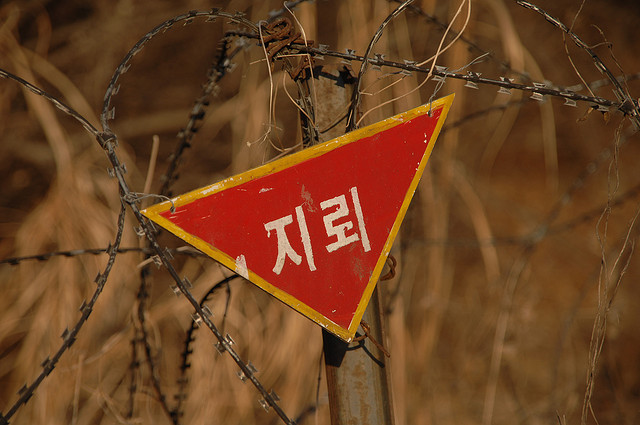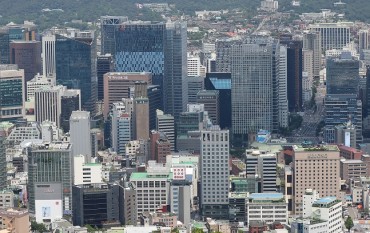
In the DMZ, a buffer zone between the military forces of the two Koreas, more than one million landmines (officially) can be found, including wooden-box mines made by North Korea which are reported to have caused the recent accident, as well as other anti-personnel and anti-tank mines. (image: US Army Photo/flickr)
SEOUL, Aug. 11 (Korea Bizwire) – After a serious landmine incident in the demilitarized zone (DMZ), which resulted in severe injuries to two South Korean staff sergeants, the problem of mines in Korea is surfacing again.
In the DMZ, a buffer zone between the military forces of the two Koreas, more than one million landmines (officially) can be found, including wooden-box mines made by North Korea which are reported to have caused the recent accident, as well as other anti-personnel and anti-tank mines.
According to the Peace Sharing Association, a coalition of local anti-landmine groups, and the Korean branch of the International Campaign to Ban Landmines (ICBL), there are 2.3 landmines for each one square-meter of land in Korea, and it will take 489 years to remove all of the mines in Korea including ones in unidentified places.
In addition, at least 1,000 people are estimated to have been injured or killed by landmines over the past six decades, the group added.
A landmine expert estimates that even more mines are currently present in Korea. Kim Ki-ho, director of the Korea Mine Clearing Research Institute, said, “Currently, there are about 3.5 million mines, mostly in the DMZ.”
“The problem lies with anti-personnel mines placed inside the civilian travel restriction zone. They are difficult to detect, and floodwaters often sweep them away to distant places. However, most South Koreans are ignorant of the dangers,” he said.
South Korea stopped laying new mines in 2000. However, it has not joined the Ottawa Treaty that bans the use or production of anti-personnel mines, which more than 160 countries have already signed.
Meanwhile, South Korean soldiers reacted courageously in the face of danger caused by the mine blasts, and carried out their duties to rescue the injured soldiers.
The Ministry of National Defense of Korea released video images taken by a thermal observation device (TOD) at the time of the landmine detonations. According to the images, the soldiers carried out the evacuation of the injured soldiers calmly and without panic. While sending back the wounded soldiers, they prepared for another attack from by aiming their rifles to the North.
The defense ministry said, “In spite of the urgent situation, the soldiers calmly carried out their operation, evacuating the injured soldiers in just 15 minutes. Thanks to their courageous actions, the two injured soldiers were safely sent to the military hospital.”
By John Choi (johnchoi@koreabizwire.com)






